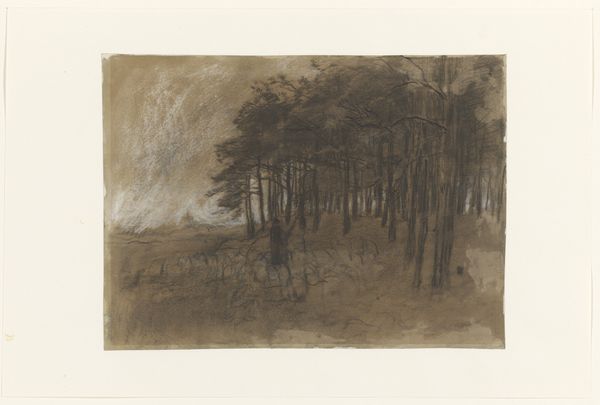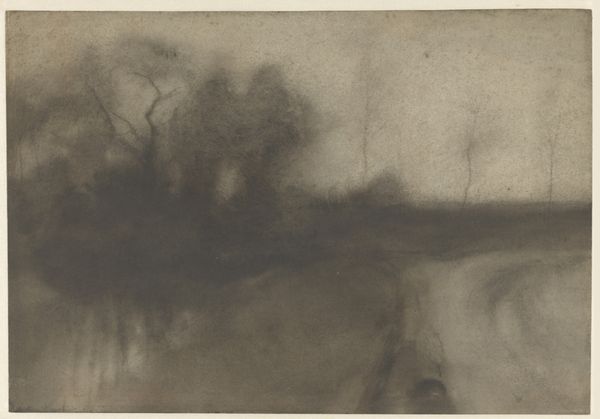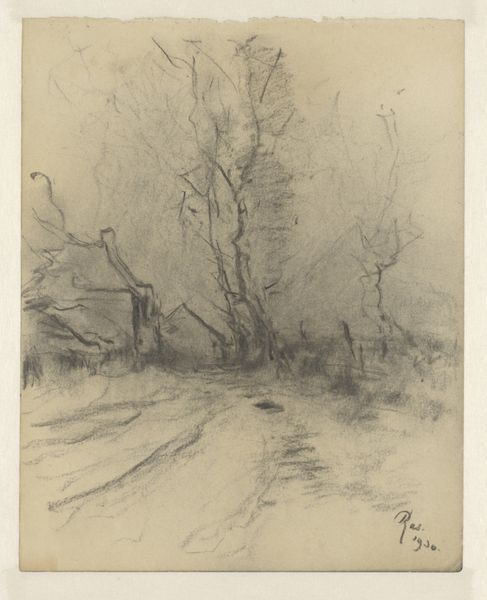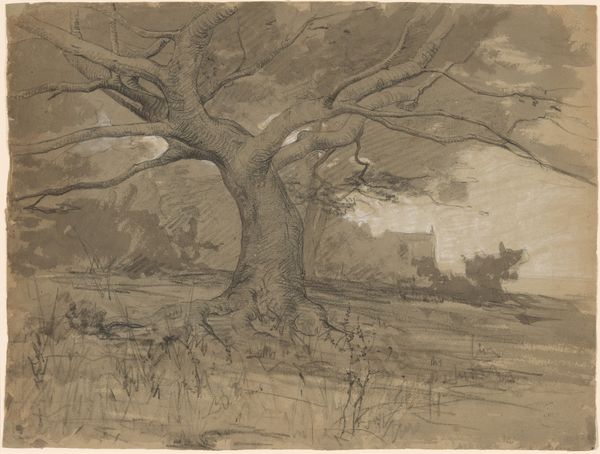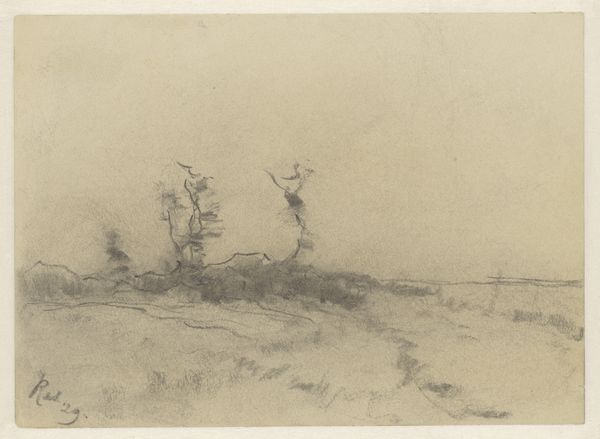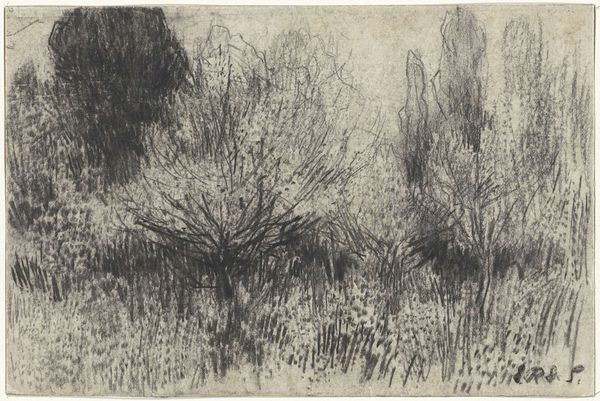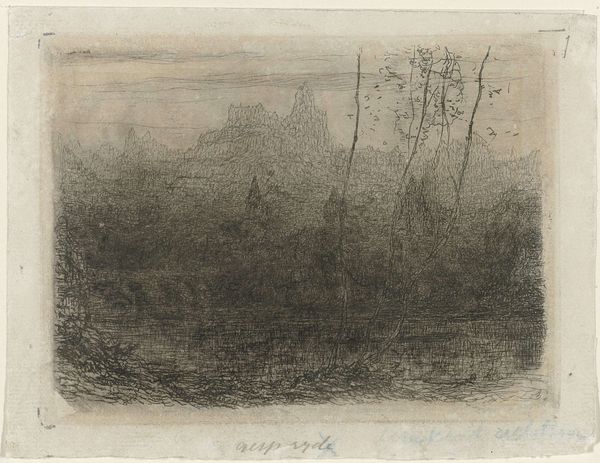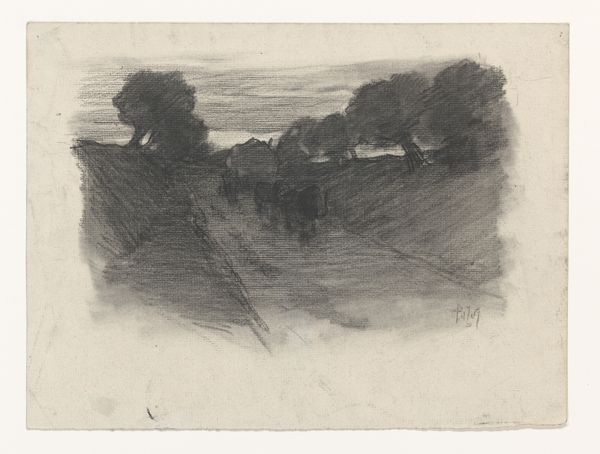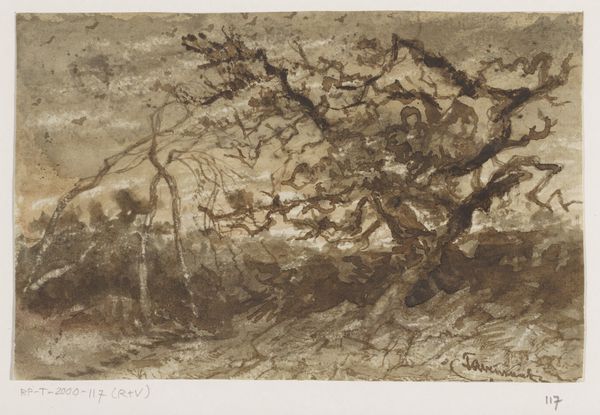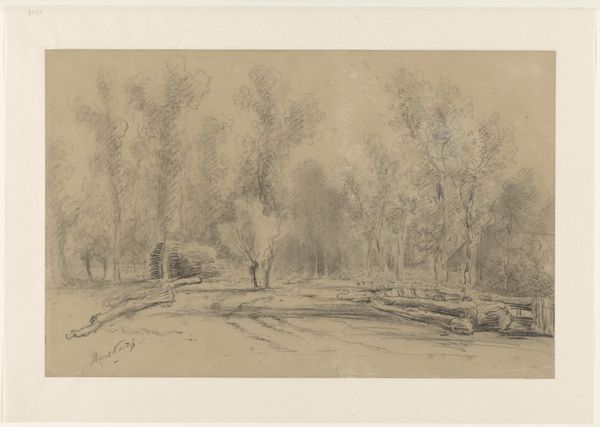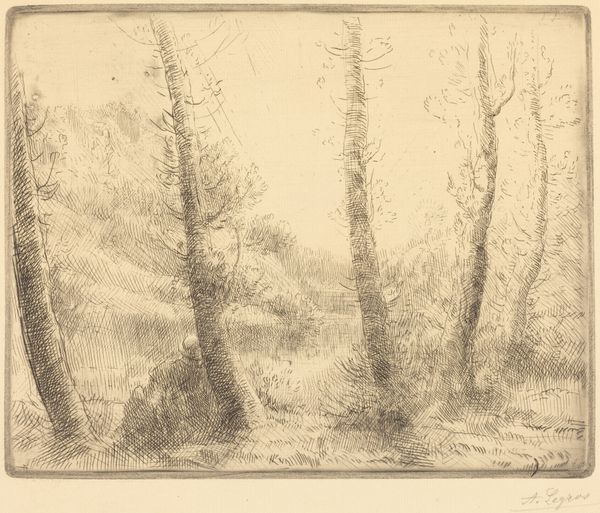
drawing, pencil
#
drawing
#
landscape
#
pencil
#
abstraction
#
watercolor
Dimensions: height 500 mm, width 727 mm
Copyright: Rijks Museum: Open Domain
Curator: Welcome. Before us, we have Pieter H.J.J. Ras’ “Bosrand met een hek”, possibly created between 1933 and 1939. The artist utilized pencil and watercolor on paper to render this landscape, a drawing now residing here at the Rijksmuseum. Editor: My first thought is one of stillness, a muted atmosphere. The composition relies heavily on subtle tonal variations. Did Ras aim to capture a particular light, or perhaps, a sense of melancholy? Curator: I think that feeling stems directly from the arrangement of forms. Consider the contrast between the organic, somewhat chaotic, lines of the trees and the rigid geometry of the fence. The formal interplay is stark. The atmospheric perspective—the diminishing clarity in the background—creates a depth, inviting us into the scene while simultaneously pushing us away. Editor: That fence immediately evokes the idea of boundaries. Could it represent limitations imposed during that era, societal or personal barriers restricting movement and vision? The symbol of the fence appears almost spectral, as if it might dissolve into mist. Curator: Precisely! It functions on both a representational level, a fence is obviously a fence, but it also speaks to the more abstract theme of containment. And yet, despite the somber tones, observe how Ras uses the contrasting strokes to articulate a spatial recession into the horizon; it serves as a critical structure in the landscape. Editor: Those lines also read as tracks in the mud or snow, perhaps paths. But, crucially, they lead directly to that symbolic fence. Are we being guided towards those limits? Or, given the context of its creation, are we being warned about future barriers? Curator: That reading introduces a crucial historical dimension. Though visually minimal, this composition embodies the anxiety and uncertainties of the period, manifested through its delicate application of medium to create representational abstraction, hinting at far more than what's on the surface. Editor: It’s a work that quietly resonates. Its effectiveness lies in suggesting the unseen and perhaps unsaid – the historical atmosphere beyond the immediate scenery. Curator: A valuable point; the drawing prompts a formal appreciation as well as engaging a wider cultural-historical reading. Thank you.
Comments
No comments
Be the first to comment and join the conversation on the ultimate creative platform.
